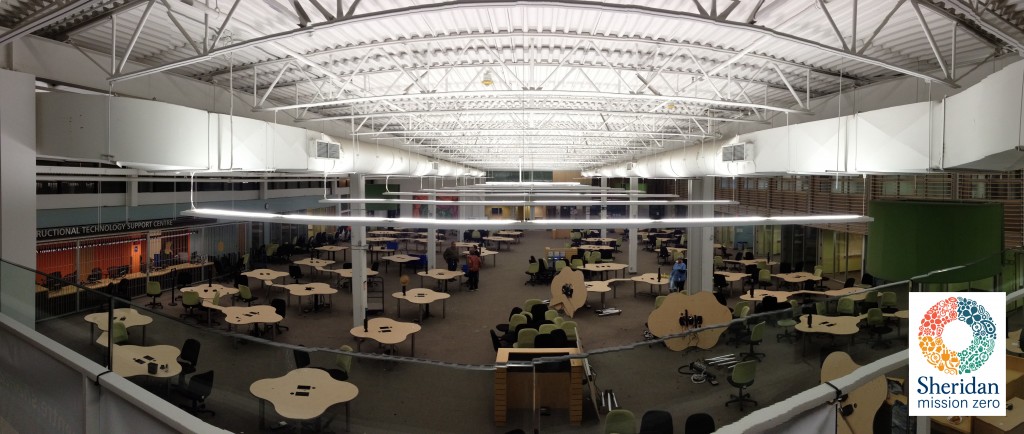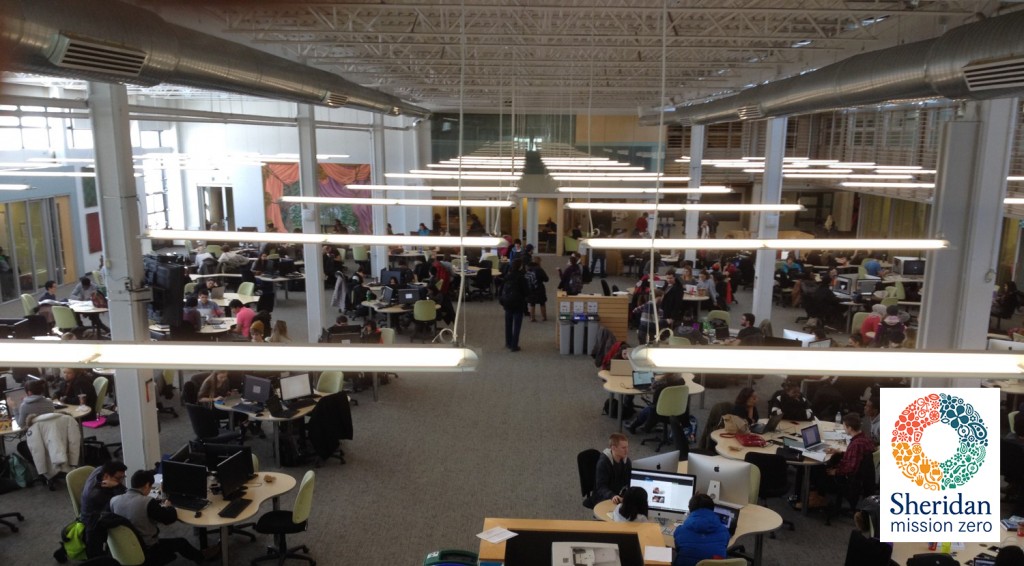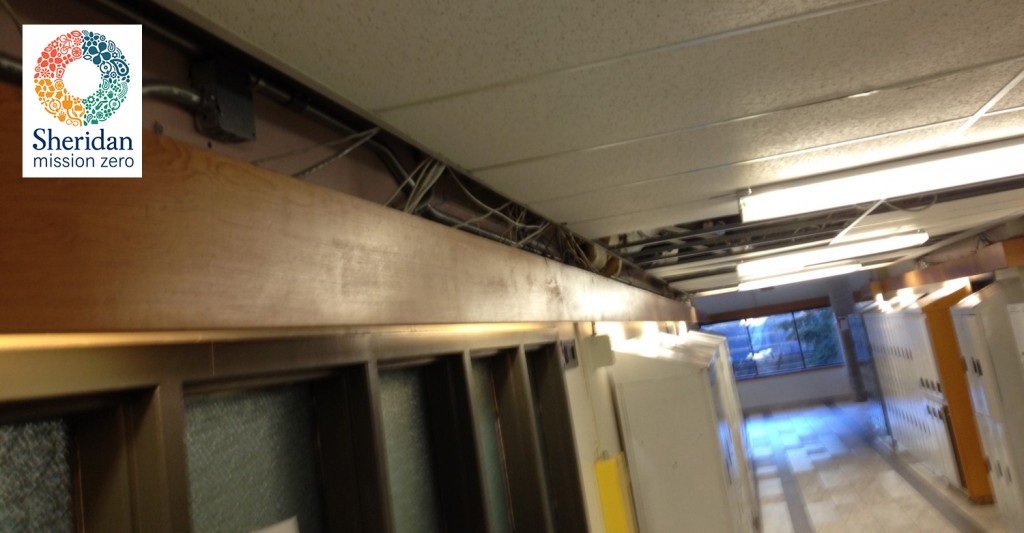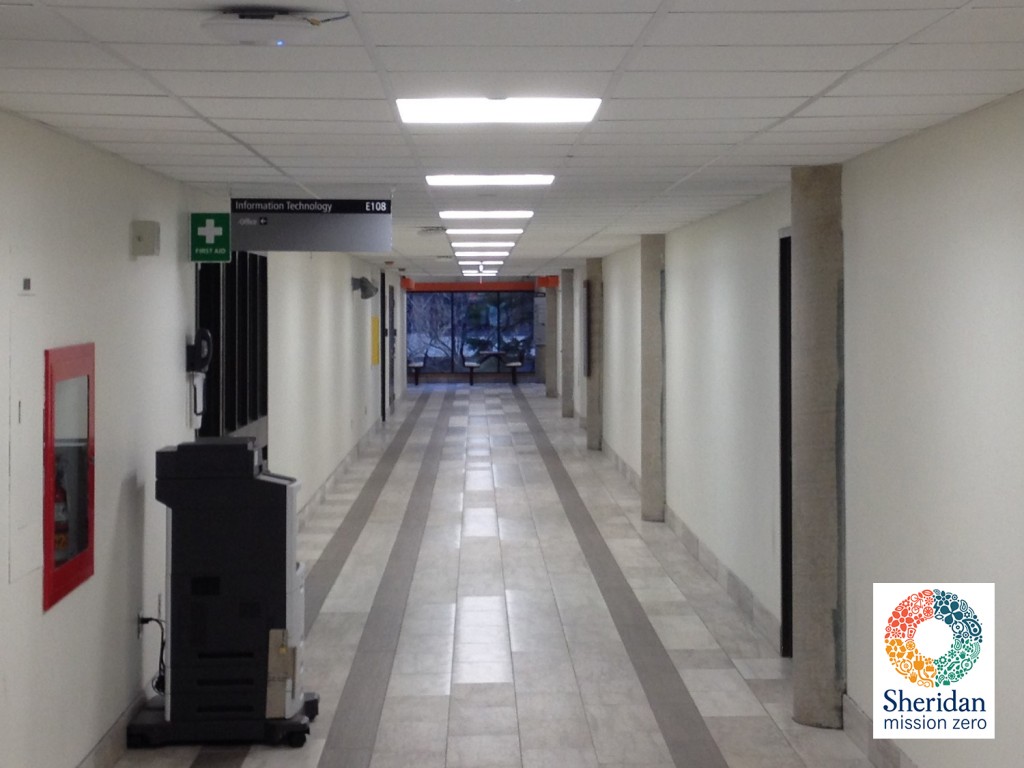LED Lights
Problem Diagnosis
The IECMP identified that lights were left unintentionally “on” for 24 hours in unoccupied rooms. Significant and effective changes have been made to prevent this daily waste of energy.
The IECMP’s initial plan to improve energy savings was to upgrade lamps in order to save 3 watts per lamp. Upon review, the IECMP team realized that a light bulb replacement alone wasn’t sufficient in creating a sustainable and comfortable work environment. The lower wattage bulbs had a reduced light output and an increased sensitivity to cold which resulted in flickering. The IECMP team also observed that the poor placement of existing light fixtures also contributed to the already reduced lighting output as well as loss of light to the ceiling.
An Integrative and Technological Solution
The solution was to use non-glare LED fixtures that were of a lower power than fluorescent lights. Combined with strategic placement, light distribution could be engineered to provide even illumination within a space and thus using fewer light fixtures altogether. The renovations also include the reorganization of wires and removal of the wooden valences to give a cleaner and modern look. All preexisting lights have been collected and appropriately recycled.
Specially ordered from Cooper Industries, the newly installed LED fixtures include the Corelite Divide Suspended LED, Metalux Encounter Series, and Metalux SNLED Series. The advanced optical design of WaveStream technology has taken LED to the next level with:
- The ability to bend disperse, and direct light using a micro optical design
- A wider and more natural distribution of light
- Improved energy efficiency
- Low maintenance requirement
The Results
A side-by-side comparison of Trafalgar’s Learning Commons shows the drastic results utilizing the innovative WaveStream technology. Pre-existing light fixtures would illuminate the ceiling more than the space below as shown in the pre-retrofit photo (top). In the post-retrofit photo (bottom), the ceiling is now more comparatively dim than the space below. Through strategic placement, the number of required light fixtures was reduced from 90 to 62 resulting in successful light distribution. Without the lighting control features yet in place, the Learning Commons has currently achieved 64% in lighting energy savings.
To date, the Lighting Fixture Retrofit and Lighting Controls Integration has been a major contributor in reducing utility expenditures by $350,000. The upgraded lighting fixtures throughout Sheridan are running at full power and are already experiencing up to 70% lighting energy savings. Energy Manager Herbert Sinnock (Office for Sustainability) foresees improved lighting energy savings up to 80-90% with the completion of lighting control integration.
Lighting control will be achieved through the use of daylight and motion sensor detectors in order to conserve energy and tackle the on/off switch problem. Simply put, the sensors will detect occupancy and lights will dim accordingly. New light switches and the Digital Addressable Lighting Interface (DALI) Control Systems also enable improved management of lighting controls. With these innovative technologies in place, Sheridan is on its way to achieving its goal of reducing energy consumption by at least 50%.











Follow Us!